Summer Rain: Eight Things We Learned at DGTL Festival
We dry ourselves off and collect our abiding impressions of the first edition of Barcelona's DGTL Festival
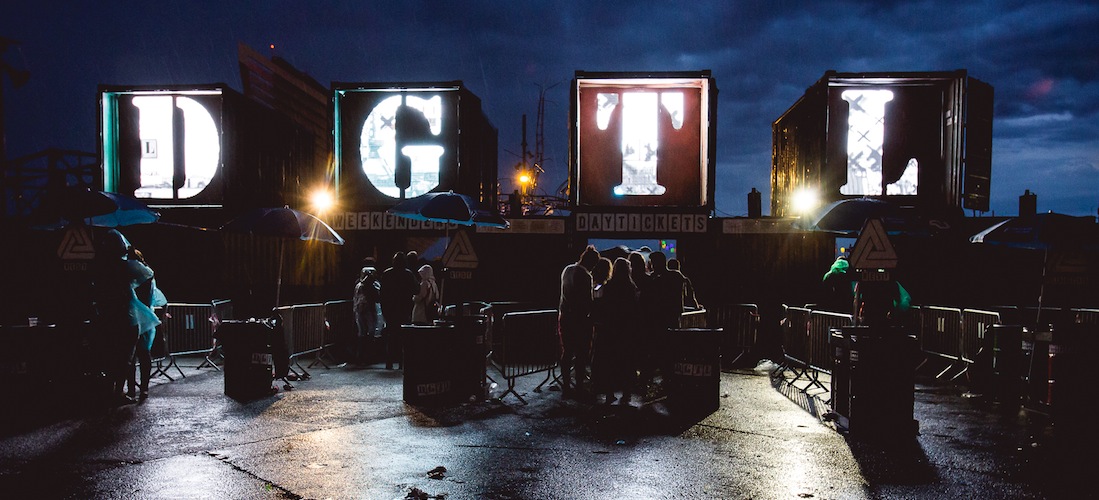
Summer Rain: Eight Things We Learned at DGTL Festival
We dry ourselves off and collect our abiding impressions of the first edition of Barcelona's DGTL Festival

Last weekend, XLR8R made the journey to one of our favorite cities, Barcelona, to attend the first edition of a new house and techno festival called DGTL. Taking place at the Parc del Forum venue also used by the longstanding Primavera Sound festival, DGTL has clearly been set up to fill what has always been a surprising void in Barcelona’s summer. From late May to mid-July the city crackles with activity as Primavera Sound, Sonar, and fabulous weather magnetically attract artists and fans alike to the Catalan capital. But August—a month in which Catalans vacate the city in their droves, and many shops and businesses close down for the whole month—has traditionally been pretty much musical dead time in Barcelona, with underwhelming club and gig lineups and a total lack of electronic festivals. The advent of the now-weekly Piknic Electronik event on Montjuic began to address that in the last few years, and over the last two summers that’s been joined by a smattering of one-day events at the stunning El Monasterio venue within the El Poble Espanyol architectural museum.
DGTL looks to be the most serious effort yet to provide the city with something big to look forward to in August, however—and from what I saw last weekend, it has the potential to grow into a cherished yearly institution in its own right. The first edition took place over three stages and featured a reasonably straightforward lineup of crowd-pleasing big-hitters (Dixon, John Talabot, Ben Klock, Maceo Plex, Henrik Schwarz), alongside locals such as Paco Osuna and DJ Fra and the odd (relative) curveball in the shape of Boddika and Pearson Sound. The festival was largely a success despite some bizarrely inclement weather, and below are eight of the strongest impressions I took away from the weekend.
The previous experience of DGTL’s team ensured a remarkably smooth first edition for the festival.
The first editions of festivals can be shaky affairs in lots of ways, the promoters thrust into the organizational deep end with inevitable negative results. DGTL was different because the people behind it already have a ton of experience of putting on festivals and events in their native Netherlands, and clearly know what they’re doing as a result. In pretty much every way (they couldn’t control the weather, so we’ll let them off with Saturday’s downpour), DGTL ran smoothly, from the queue-free cashless bars and good food options to the provision of a covered stage during the worst of the rain on Saturday night. Aesthetically, the festival also seemed to have hit the ground running, with use of hulking shipping containers, interesting overhead meshing features and some amazing wire sculptures leaving the impression of a festival with an already-complete identity, and its strong recycling ethos went down well in a city with an increasingly strong recycling ethos of its own. It never hurts to send customers away satisfied from the get-go, and DGTL largely managed to do that.
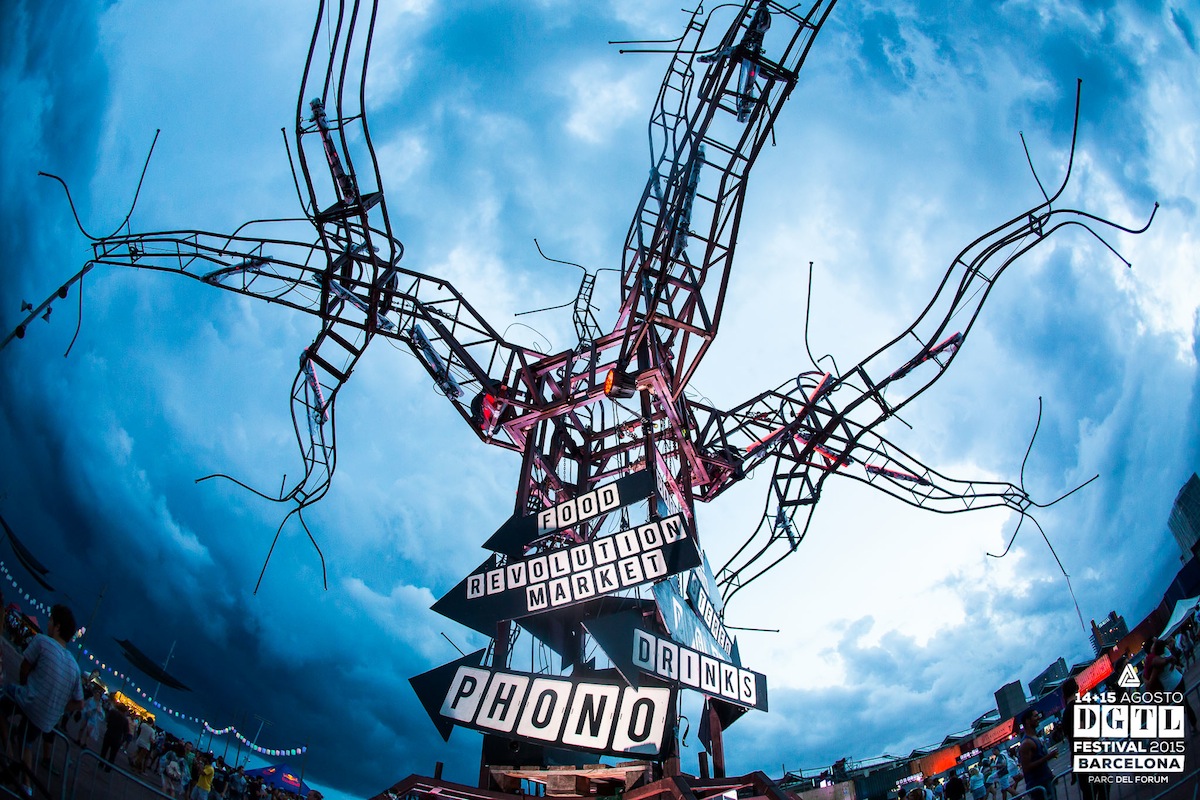
Parc del Forum can work on a scaled-back basis.
In the form in which it is used for Primavera Sound, the Parc del Forum venue is a sprawling outdoor area taking in a dozen or so stages and a potential ten or 15 minutes’ walk from one end of the site to the other. DGTL’s use of the area was unsurprisingly far more scaled-back, taking in three stages and no more than two minutes’ walk in what Primavera attendees will know as that festival’s central hub. While it felt a little strange not to be able to stride off towards Primavera’s waterfront Pitchfork Stage, or the much-loved, bowl-like Ray-Ban Stage, DGTL’s use of the area was economical and logical. Unlike Primavera, DGTL also positioned a stage underneath Parc del Forum’s iconic slanting “roof” feature. Approaching this stage occasionally revealed the echo-related reasons why Primavera avoids placing a stage there, but once you were safely underneath the roof it worked fine, and afforde lovely views out over the Mediterranean. Assuming DGTL intends ultimately to grow into a larger-scale enterprise, it should be able to utilize greater areas of Parc del Forum as it grows, making it a canny as well as visually striking choice of venue.
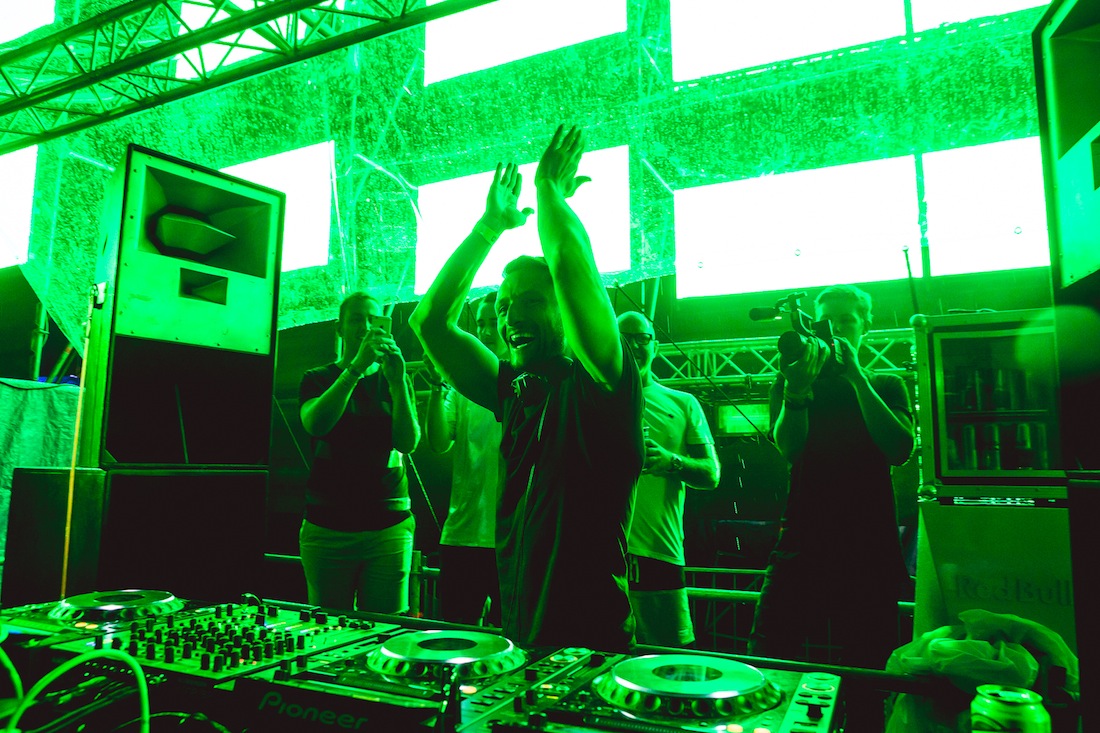
DJ Koze’s “XTC” is one of the year’s biggest gifts to DJs.
When it came out in June, it was instantly obvious that “XTC” would be one of the year’s standout tunes, but its bubblebath-like shimmer seemed too meditative to make as strong an impression on the dance floor as it does while blissing out on the couch. That was before the cream of Europe’s DJs got to work on it, however. This summer I’ve seen several turn out their own slightly higher-caffeine mixes or edits of the track (Move D’s euphoric use of it springs particularly to mind) and each and every time it’s been a nailed-on set highlight. So it was with Dixon, who dropped it mid-set on Saturday night, adding a simple extra layer of propulsion to the track’s percussive bed, and letting its beautiful chords and tranquilized female spoken-word vocal do the rest. Two months after its release, “XTC” is also now at a level of exposure where a good section of any given crowd is likely to be able to “sing along” when it crops up. The sight of hundreds of people intoning its hypnotic words (“I heard you say once that a lie is sweet in the beginning and bitter in the end, and truth is bitter in the beginning, and sweet in the end. I have been meditating, but I don’t have the experiences people report from the drug ecstasy. Is the drug like the lie, and meditation the truth? Or am I missing something that could really help me?”) while dancing for joy has to rank as one of the year’s more lovely, not to mention bizarre, sights.
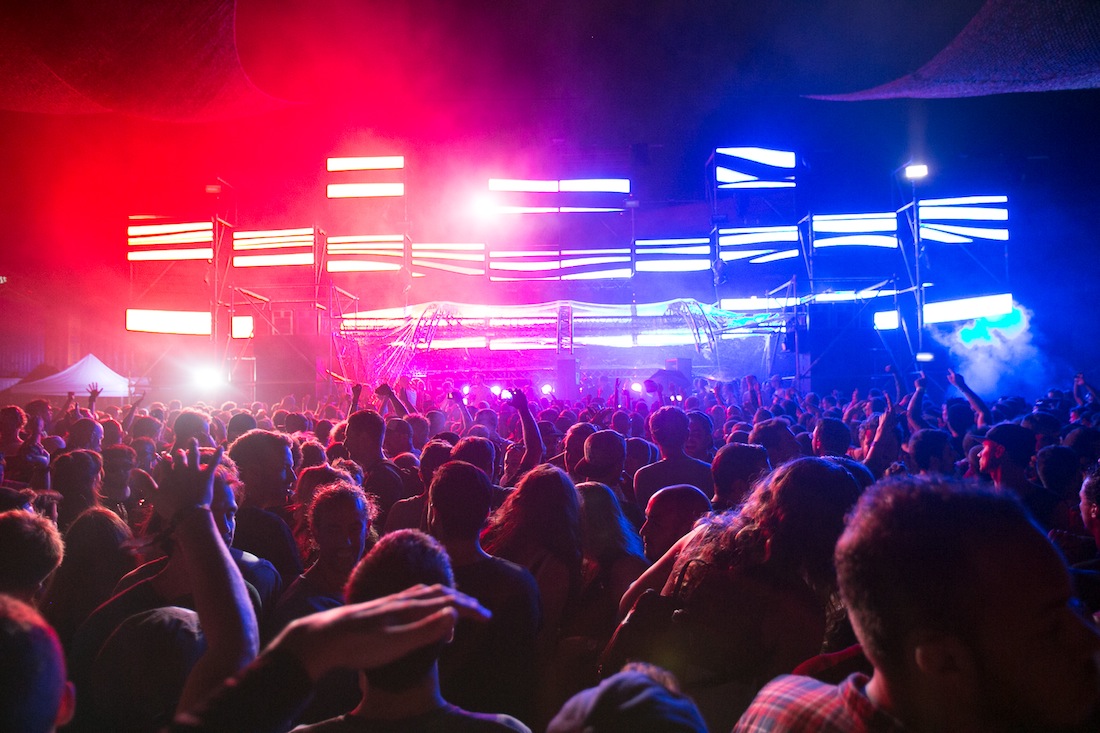
Radio Slave and Thomas Gandey’s remix of Aphrohead’s “Let’s Prance” repeatedly did excellent business.
If “XTC” provided the weekend’s most beautiful moment, then Radio Slave and Thomas Gandey’s remix of Aphrohead’s “Let’s Prance” was the track that most commonly got people moving. I heard it played on three separate occasions over the two nights—by Klock, Dixon and an unidentified third DJ—and every time its pounding low-end, flickering piano and wonderfully silly vocal instruction (delivered with perfect, dread-soaked seriousness) did all kinds of damage.
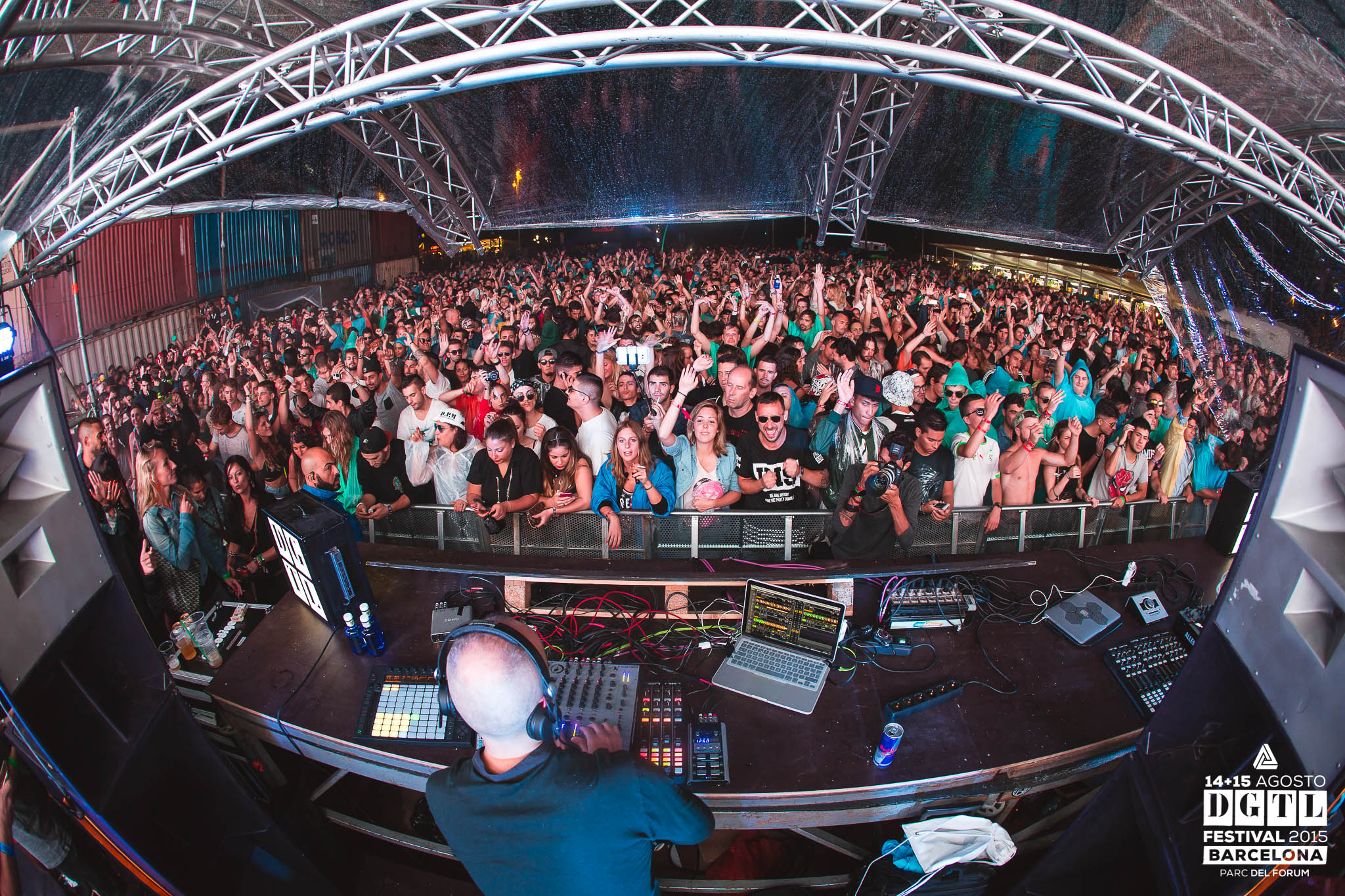
John Talabot was a major highlight, as always.
To say Talabot and Barcelona go together is facile—his talents make him a natural and celebrated presence wherever he goes, not just in his home city. It’s always a delight to see him on home turf, however, and once I got over the early devastation of realizing that his Saturday-night show would not be one of the breathtaking disco-only sets that have lit up the last two editions of Primavera Sound, I was able to settle in happily for a typically brilliant two-hour set. Winding, EBM-tinged fare such as Dimitris Kalfas’ remix of Gil Berg’s “Marine 9” and Nina Kraviz’s “Desire” ruled its early stages, and as the weather improved he lightened things a shade with the euphoric, elastic piano chords of Hbng’s “Planet Sunday.” He didn’t put a foot wrong all evening (when does he ever?), and a massive main-stage crowd lapped up every second.
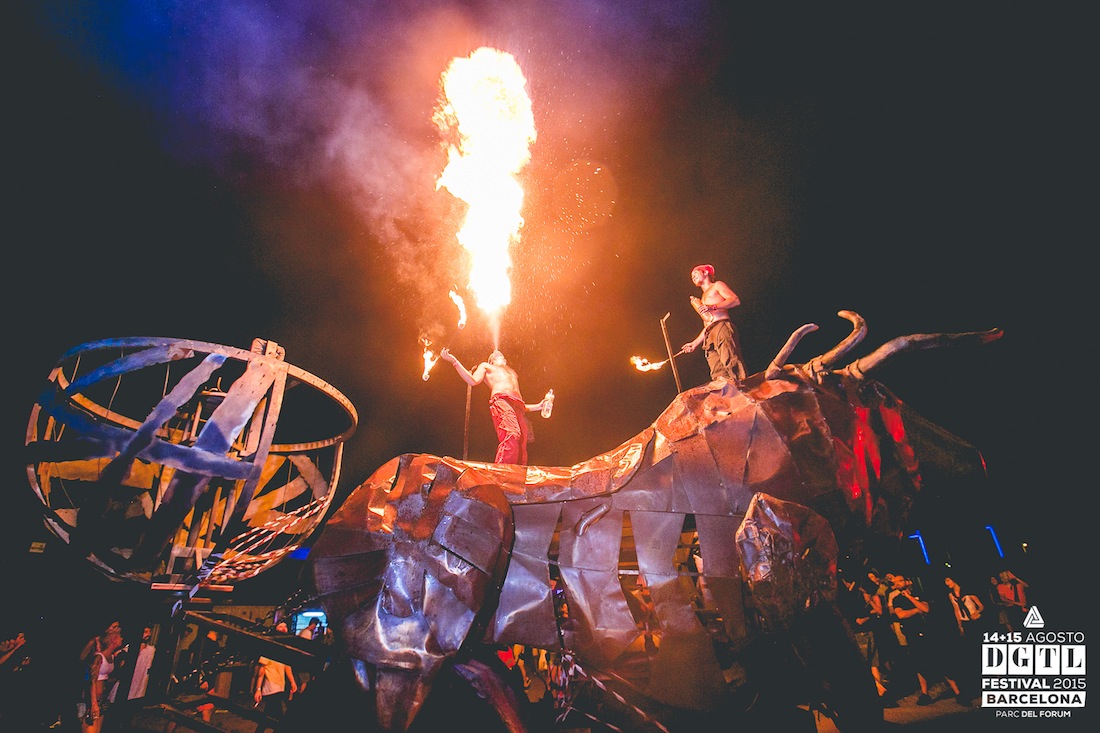
DGTL was unlucky when it came to the weather, but nobody seemed to mind too much.
“DGTL travels to always-sunny Barcelona for a two-day edition of festival goodness,” ran the understandably confident pre-event blurb on DGTL’s website. I no longer live in Barcelona, but friends who are still resident there assure me that this has been the hottest and driest summer they can remember, making the heavy rains that beset DGTL on its second night a particularly unlucky break. The festival was well-prepared, however, providing thousands of free ponchos and a covered stage on the second night that ensured a packed captive audience for Ryan Elliott‘s loose-limbed set of sax-laden house and disco. It would be wrong to say the rains didn’t affect the mood at all—the wave of relief when they abated, and finally disappeared entirely, during John Talabot and Dixon’s closing main-stage sets was palpable—but most seemed willing to get on with enjoying the night as best they could. The sunset that the conditions created, which bathed the site and city in an extraordinary deep-orange glow for around ten minutes, was also a serious compensation, and not only to those with Instagram profiles to update. Unless DGTL has accidentally set up its offices on the site of an ancient Indian burial ground, then future editions of the festival are bound to be a lot more sun-kissed.
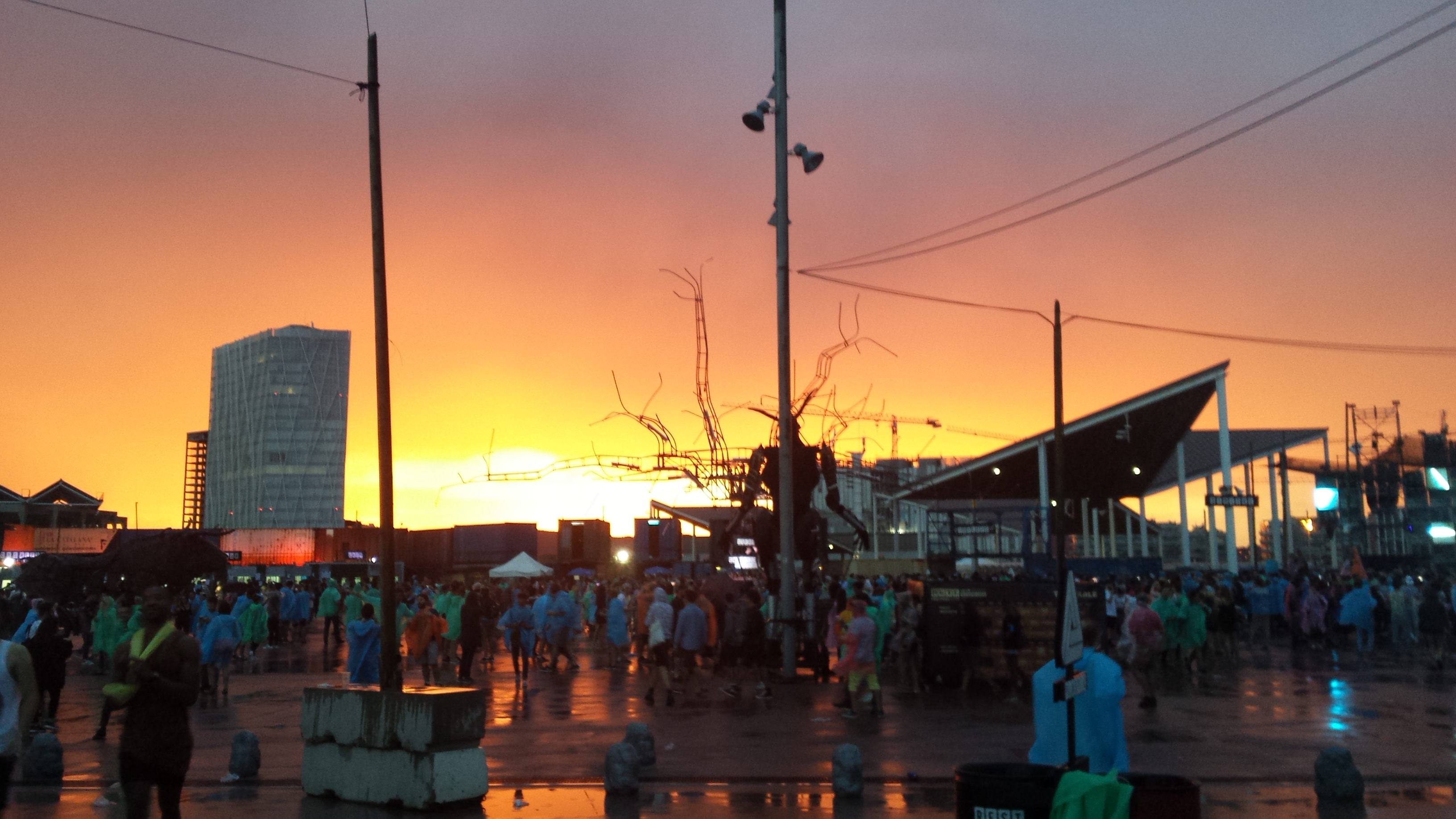
Ben Klock was as reliable—and versatile—as ever.
Ben Klock’s festival schedule and my own intersect with such unerring regularity that I sometimes feel as if I’m stalking him around Europe. His ability to precisely tailor his sets to the needs of each separate audience means these repeated viewings of the Berghain resident at work never get boring, though, and his show at DGTL was no exception. There was a relatively maximalist levity to a lot of Klock’s selections on this occasion, with the jackhammers only broken out in the closing stages of his Friday-night set. Ending with DJ Deeon’s “Freak Like Me” was a nice touch as well, and another acknowledgment that this was an outdoor summer festival in Barcelona rather than a dark room in Berlin.
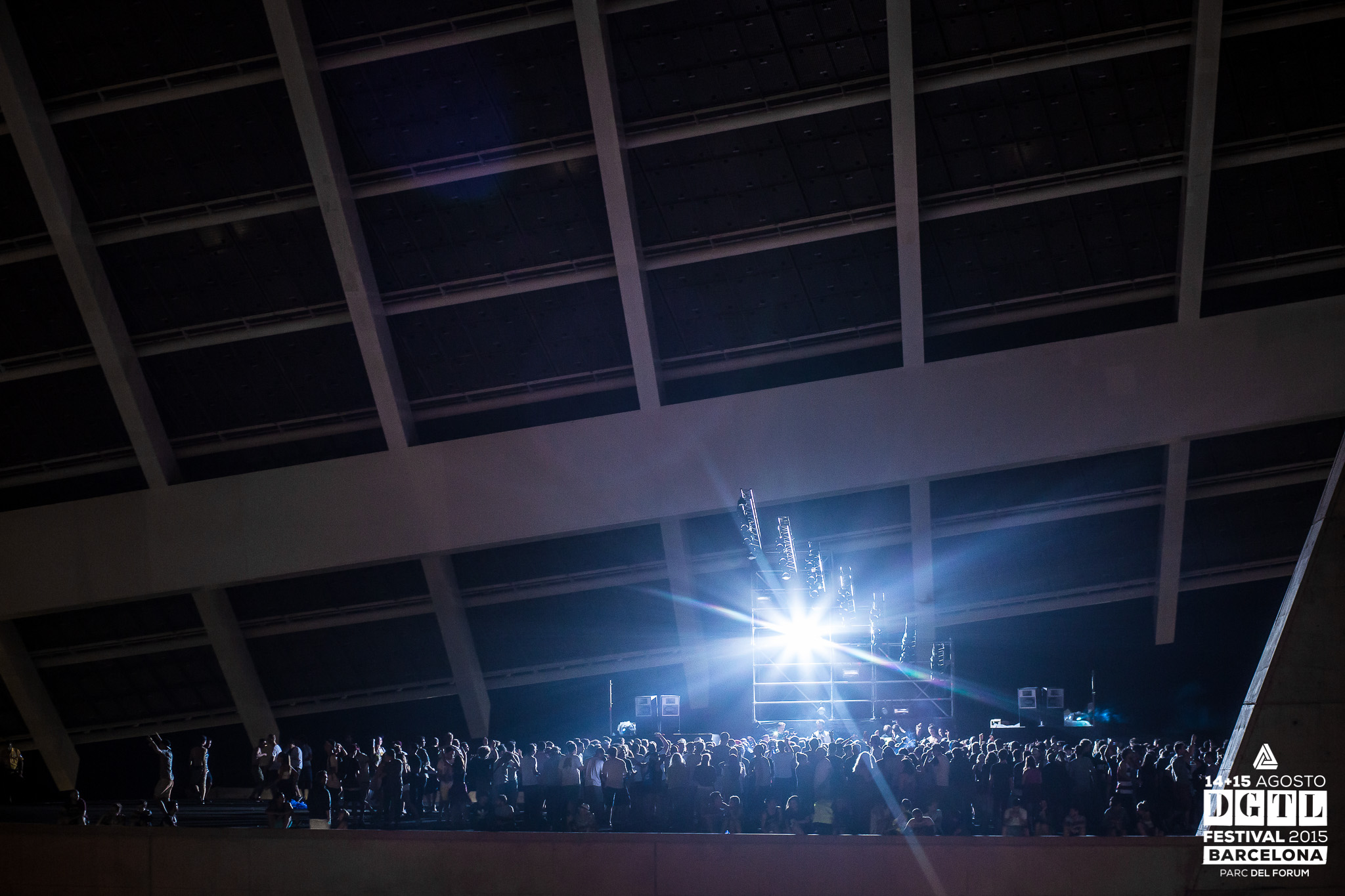
There is a definite appetite for events like this in Barcelona in August.
DGTL’s first Barcelona edition, while suffering a little from the weather, was generally a success, but then that should be no surprise at all to anyone who has been to the city in recent years. While there still may be a strong local element that leaves the city during August, Barcelona is brim-full with residents from other nations, and indeed a lot of young Catalan and Spanish people, for whom the tradition of taking off for the whole of August is a slightly baffling curiosity. Few people come to live in Barcelona for a quiet life, so it follows that any event of this sort, if properly organized and engagingly programmed, should be as resounding a success in August as in any other month. On the evidence of its first edition, there’s no reason why DGTL can’t fill the void.
Support Independent Media
Music, in-depth features, artist content (sample packs, project files, mix downloads), news, and art, for only $3.99/month.

